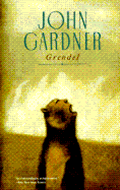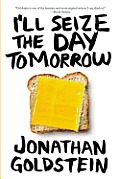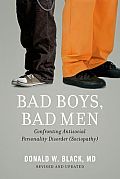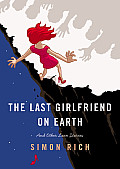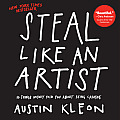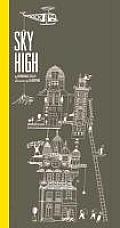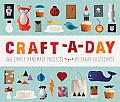Link to this review in the form of a comic strip by guest tagged literary
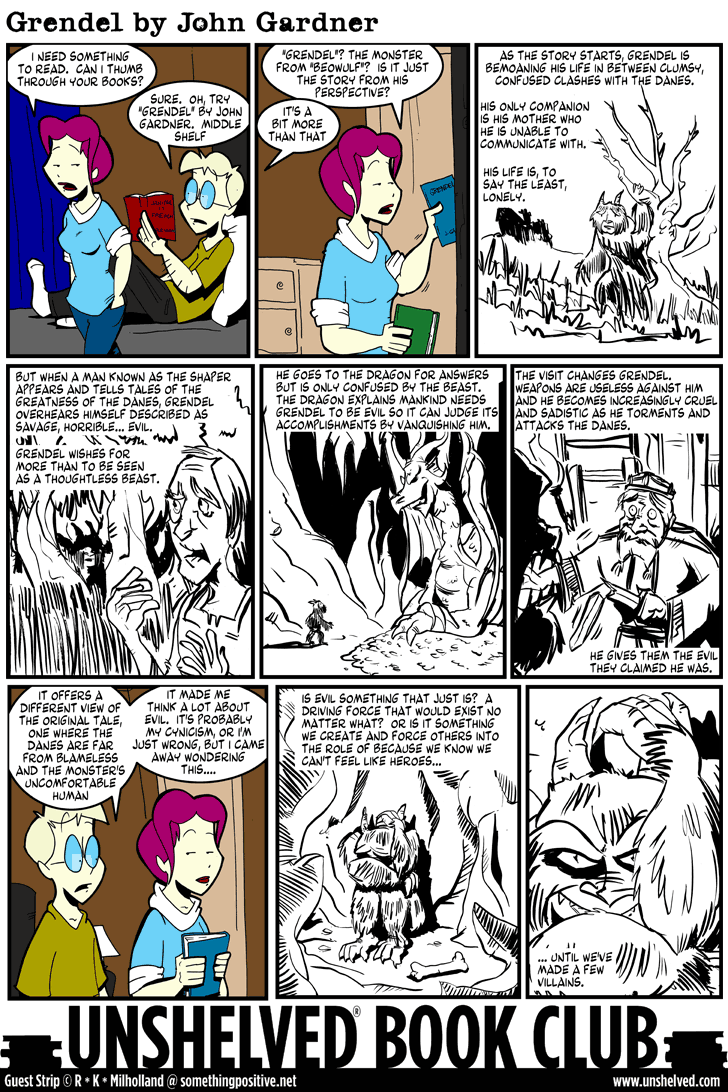
Click for the full-sized comic
@bookblurb In this story of the lonely monster from Beowulf, Grendel wasn't always evil. We made him that way.
Link to this review by flemtastic tagged biography • humor
Jonathan Goldstein, star of the weekly NPR radio show Wiretap, was taking stock of his life as he turned thirty-nine. He had no wife, no kids, no car, and no house or houseboat. He wrote notes to himself over the year between his thirty-ninth and fortieth birthdays which, along with stories of his experiences that year, became this book.
Goldstein’s tech-phobic father, socially-inappropriate friend Gregor, and his own worries fill short chapters about every random thing that made him wonder. Like if the McRib is so popular and worth going to McDonald’s for, why don’t they sell it all year long? How many old movies would have been ruined if cell phones existed at that time? (The characters in Deliverance could have just called 9-1-1.) Goldstein also documents his own odd behavior.
Why I picked it up: I started listening to Wiretap because it’s always on at the end of prison visiting hours, and it entertains me during my drive home. Goldstein and his friends are neurotic, his humor dry, and I wanted to see if it could be translated to the page.
Why I finished it: The entertainingly random vignettes from Goldstein’s life. He experiments with colognes to find his signature scent and decides he likes Gucci because he says it “makes me smell like the inside of a rich old man’s toiletry bag.” He collects airsickness bags to use as lunch sacks to keep others from taking his food from the work refrigerator. Goldstein avoids working on his show by trying to pack a cafeteria fruit cup with as much fruit as possible because the containers are sold for a flat rate. (He claims that this activity proved to be the most productive part of his day.)
Goldstein’s friends are a piece of work. Howard, on Wiretap, says that the way to get people to stop peeing in public pools by having a peeing section and a non-peeing section, instead of a shallow end and deep end.
I’d give it to: My sister Lora, a big fan of the equally deadpan David Sedaris.
@bookblurb Jonathan Goldstein, star of the NPR radio show Wiretap, documents the year between his 39th and 40th birthdays.
Link to this review by flemtastic tagged nonfiction
Antisocial Personality Disorder (ASP) is the medical term for adults who seem unable to live within society’s structures: sufferers are disorganized, cannot keep jobs, feel chafed by rules, and are at high risk for addictive behaviors. ASP is an equal-opportunity disease that strikes men (and a very few women) across racial lines. Those with ASP are usually identified and diagnosed by the trail of deceit, disruption, and violence they leave in their wakes. (ASP is often confused with sociopathy, but they’re different; sufferers of ASP know that what they’re doing is wrong, whereas sociopaths don’t.) Black discusses the biological, sociological, and psychological factors that contribute to ASP. Boys diagnosed with conduct disorders almost invariably end up with full-blown ASP as adults, even if vigorous treatment is attempted in childhood.
While Black sees reason for hope in research on dopamine, serotonin, and early cognitive behavioral therapy, the sad truth is that these diagnosed bad boys will very likely become bad men, with all the implications for society that implies.
Why I picked it up: I wanted to read about how antisocial personality disorder is diagnosed in children and whether anything can be done to help them (and everyone around them).
Why I finished it: It’s heart wrenching to think that about four percent of people are doomed because of biology; ASP sufferers get dealt a crappy hand and suffer the consequences with little real hope of getting better. Seventy-five percent of those diagnosed as children will spend at least one year behind bars as an adult, eighty-four percent will have drug and alcohol issues. In addition to genetic factors, suffering abuse as a child may play a role, too.
And I enjoyed the opening discussion about the reluctance of some in the psychology community who fear that giving legitimacy to ASP will excuse immoral behavior because it is a labeled disease.
I’d give it to: My neighbor Jonathan, who works with students who have been removed from regular schools because of violence or extreme misbehavior. He would appreciate the detailed coverage of the latest theories on how to teach students who have cognitive distortion issues.
@bookblurb An in-depth examination of Antisocial Personality Disorder, which cannot be effectively treated.
Link to this review by davidtomashek tagged fantasy • short stories • literary
This collection of fantastical stories explores the nature of romance from a decidedly male perspective. Sirens lure men to their death in a canal in Brooklyn. An invisible man jealously shadows his former lover. Oog, a caveman, vies for the affections of Girl. And, of course, a guy faces the pressure of dating the last girlfriend on earth.
Why I picked it up: Leafing through the book, I started reading a story at random. It began, “When I found out my ex-girlfriend was dating Adolf Hitler, I couldn’t believe it.” Here was a writer going over the top to express the bitterness and isolation when an ex starts dating other people.
Why I finished it: Though the book constantly made me laugh, each story also had an undercurrent of longing and sadness. Despite the fact that these stories are ridiculous and impossible, or perhaps because of that, Rich managed to put his finger on every raw nerve I’ve ever felt when dating.
I’d give it to: My friend Peter. In college, no one worked harder in the pursuit of romance, and no one seemed more confused when his plans failed to earn a woman’s affections. He’d also love “Dog Missed Connections,” newspaper ads such as, “I’d love to smell your genitals. Let me know if you’re intrigued.”
@bookblurb A humorous collection of fantastic stories that explores the pitfalls of romance from a male perspective.
Link to this review by geneambaum tagged art
Everything you need to know about being an artist (except techniques like how to paint or sculpt), delivered in large fonts with just enough explanation. There are even a few photos and comics.
The ten major points (which provide the basis of organization for the book) are on the back cover, too, so you can easily decide whether it’s the book for you or a gift for an artist you know. Each of these points is supported by more specific bits of advice.
Why I picked it up: My friend Dan gave copies to me and several other friends because he loved the book so much.
Why I finished it: It’s no-nonsense, straightforward advice. But what pulled me through a book this preachy is that I agree with most of it. My favorite piece of advice is #9: Be Boring, which includes “stay out of debt,” “keep your day job,” and “marry well.” (When anyone asks me how to become a professional cartoonist or writer, I always tell them to marry someone supportive who has a steady job and healthcare.)
I’d give it to: Marin. I think it would resonate with her because, in her collages and the nonfiction book she’s working on, I can already see evidence of #10: Creativity Is Subtraction. (Comics are subtraction, too. Good cartoonists take out everything that’s extraneous to a joke or a story, both images and words.) She’ll like that, at the end of the book, Kleon includes some of the index cards that didn’t make it into the book — it’s a little glimpse into his process and how his ideas evolved from the first draft.
@bookblurb 10 pieces of straightforward advice about being an artist. My favorite is #10: “creativity is subtraction."
Link to this review by geneambaum tagged picture book
Agenor-Agobar Pourier des Chappelles and Wiligis Kittycly Junior live next door to one another. (Their houses appear opposite one another, on facing pages.) They both have more money than sense, which is obvious as they start building outrageous additions onto their houses in an attempt to outdo one another.
Why I picked it up: It’s more than twice as tall (fourteen and a half inches) as it is wide (seven inches). I like books with unusual form factors.
Why I finished it: At the beginning of the book, the houses are at the bottom of the page. But as construction crews, cranes, and designers and artists show up to add to the houses, both get taller and taller. Towers of all shapes and size, jewels, tasteless art and weird decorations galore are added on to each building. Funniest for me was that, every few pages, the owner of each house hired a new architect, always labeled “new highest paid architect in the world” as they outbid each other.
I’d give it to: Rory, who, at three, is obsessed with Jenga. He’ll love the inevitable collapse of the most unbalanced building.
@bookblurb Two rich neighbors try to outdo one another with more and more outrageous additions to their houses.
Link to this review by snow tagged nonfiction • art
Graphic designer Sarah Goldschadt offers crafters a variety of themes, one for each week of the year, plus an extra one for New Year’s Eve. For each themed week, she has one simple craft to do each day.
The projects themselves are very easy but not babyish. They range from the expected — cats, dogs, the alphabet, rainbows — to the more unusual — speech bubbles, mustaches, gnomes. Each is something that can be done in half-an-hour or so, with only five or six steps in the instructions, using easy-to-find materials like felt, paint, paper, toothpicks, and the like.
Why I picked it up: The title caught my eye in the craft section of the bookstore. I’ve been looking for an easy way to do crafts every day in order to spark my creativity.
Why I finished it: I liked the cute themes and the easy to use templates. The templates are outlines of each item (such as an outline of an umbrella for umbrella week) in the size(s) needed to create the crafts for that week. So, for example, if I want to make the egg ornament and the egg card — which are different sizes — there are two different sized egg templates included and I don’t have to enlarge or reduce the image to make the craft.
There aren’t actually 365 altogether different crafts — the number is closer to about twenty — but since each week focuses only on a specific theme, that will give me the opportunity to dive into that theme and think about other ways to adapt it and add to it with my other crafting.
I’d give it to: Elora. She’s getting into sewing and will want to make each and every one of the plushes, starting with the adorable fox on the front cover.
@bookblurb Simple crafts to do each day for a year arranged in weekly themes.
Link to this review by darcy tagged science • picture book
Discover what lives in the depths of the ocean without leaving the comfort of your house. Learn about the strangest creatures that lurk in the shadows of shipwrecks and in between rocks on the bottom of the ocean.
Why I picked it up: I’m a sucker for a pop-up book, and I wanted to see what creepy, deep sea fish would look like if they were made out of paper. (I hoped they would be a little less scary that way. I was wrong.)
Why I finished it: I couldn’t wait to see what pointy-toothed monster would jump out at me from each page, from the puffer fish to the vampire squid.
And I found out it can take up to two weeks for a sea anemone to move an inch. I have finally learned of a creature slower than my children on a Monday morning!
I’d give it to: Janet, who is patient with me even though I’m still afraid of what lurks under Green Lake every time we go for a swim. Thoughts of the gulper eel should inspire her to swim faster in her upcoming ocean triathlon.
@bookblurb Eye-popping, real creatures from the bottom of the ocean pop-up out of this book.
Link to this review by emilyjones tagged coming of age • audiobook
Emily Vidal is fourteen years old when she witnesses her neighbor’s suicide, her father’s infidelity, and the decidedly un-adult choices made by the adults around her. She struggles to make sense of her parents’ actions, their impending divorce, and her romantic relationship with one of her high school teachers.
Why I picked it up: Confession time — the main character is named Emily, and I like hearing narrators read my name. (I once met Jim Dale (of Harry Potter audiobook fame) and asked him to say my name!)
Why I finished it: I felt like I was inside Emily’s head, where all the rambling, highly emotional thoughts and teenage worries were exacerbated by the suicide she witnessed and her relationship choices. As she grew, I became invested in her and wanted Emily to learn from her mistakes and try to become the adult she was meant to be.
I’d give it to: Drue, a fellow cohort from my YALSA audiobook committee, because this narrator has a convincingly authentic voice that matures along with the character, something Drue might not get to experience in many YA audiobooks.
@bookblurb A fourteen-year-old girl deals with the very un-adult grownups in her life.
